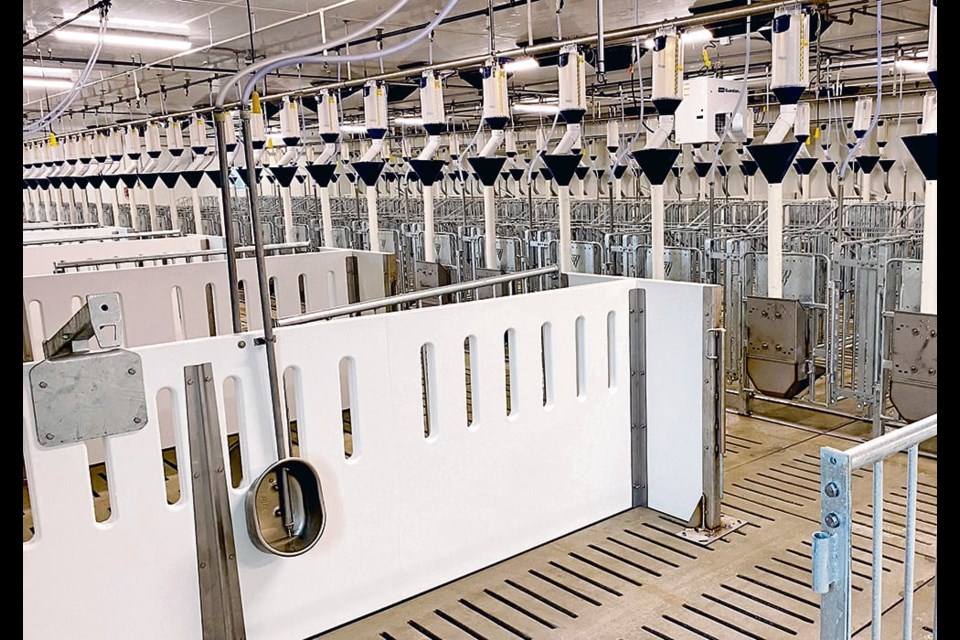WESTERN PRODUCER — A new $20-million facility is expected to make Ontario a leader in cutting-edge swine research.
“Our industry is poised to undergo significant transformations driven by advancements in technology, changing consumer preferences, sustainability goals, as well as global economic forces,” said John de Bruyn, Ontario Pork chair, at the centre’s grand opening. “The industry’s ability to adapt and innovate will play a crucial role in keeping us competitive in the world market.”
The Ontario Swine Research Centre officially opened Aug. 24 and is part of a cluster of new livestock research facilities at the University of Guelph’s Elora Research Station, including new beef, dairy and swine facilities. A new poultry facility has also been announced.
Gwen Chapman, provost and vice-president academic of the University of Guelph, said researchers can build on the solid foundation laid at the now-defunct 40-year-old Arkell Research Centre, which yielded applicable research on pig gut microbiome and identified genetic markers that led to healthier animals.
“Advances in animal health, food safety, sustainable production and innovative products help to make the sector more sustainable, as well as competitive,” she said. “This critical infrastructure will allow Ontario’s and Canada’s world-class researchers to continue their great work.”
“This facility is flexible. We can do research that’s relevant to most regions in the country,” said Dr. Lee-Anne Huber, University of Guelph swine nutrition associate professor. “The sky’s the limit, I think. It’s a game changer.”
Automation throughout the facility is designed to increase research accuracy and diversification and minimize labour by incorporating technology. For example, the water meters allow automated dose-specific medication delivery to specific rooms.
“Depending on the trial, we should be able to do (studies) more quickly, and certainly, there’s more automated collection of data, which will make it easier for the grad students,” said Huber.
“I told them they built a lot of character in the old barn weighing out feed by hand, so they’ll appreciate this.”
The Gestal feed system can record and manage complex individual dietary changes in real-time based on RFID tags, and formulate diets for sows’ parity, body condition and special feed requirements.
Huber said the nursery configuration allows her to run six replicates of four treatments simultaneously, potentially shaving years from research timelines.
There are several pens in the nursery, and finishing corridors are equipped with individual feed intake tracking technology, said Huber. This lends itself to simultaneous research studies on nutrition, genetics and economic cost of production studies.
She said switching from a closed to an open herd also opens possibilities. The facility design mimics technology that producers could replicate in their own operations, depending on how much they want to invest.
A prime example is the farrowing pen heat mats equipped with plexiglass lids to increase heat retention for piglets.
De Bruyn said he expects the centre’s state-of-the-art environmental controls, stringent biosecurity measures and people-centric work environment will attract the brightest minds to the pork industry.
“By creating an environment that encourages dialogue, learning and innovation, we hope to create a ripple effect that extends far beyond these walls, positively impacting the entire pork industry here in Canada,” he said.
The facility received $14.8 million from the province through the Agricultural Research Institute of Ontario, with the remainder funded by the Ontario pork industry and the Canadian Agricultural Partnership. In Ontario, the provincial government owns agriculture research facilities through the independent body, the Agriculture Research Institute of Ontario. The research and operations are funded by the academic and private institutions that use them.




